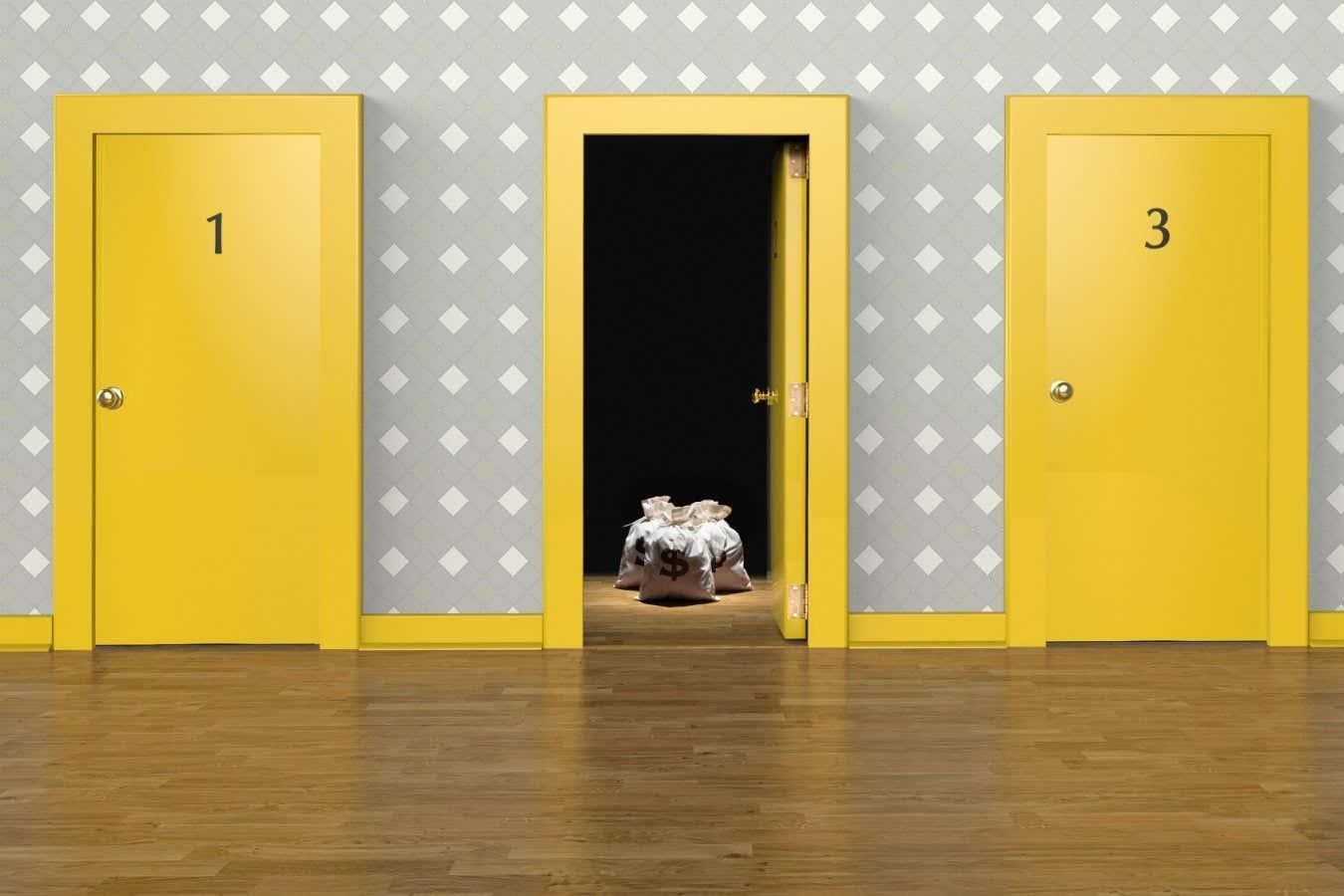Calculating probabilities can be complicated, as this classic “what’s behind the doors” problem shows, says Peter Rowlett.
Calculating probabilities can be tricky, with subtle changes in context giving quite different results. I was reminded of this recently after setting BrainTwister #10 for New Scientist readers, which was about the odds of seating two pairs of people adjacently in a row of 22 chairs.
Several readers wrote to say my solution was wrong. I had figured out all the possible seating arrangements and counted the ones that had the two groups adjacent. The readers, meanwhile, seated one pair first and then counted the ways of seating the second pair adjacently. Neither approach was wrong, depending on how you read the question.
This subtlety with probability is illustrated nicely by the Monty Hall problem, which is based on the long-running US game show Let’s Make a Deal. A contestant tries to guess which of three doors conceals a big prize. They guess at random, with ⅓ probability of finding the prize. In the puzzle, host Monty Hall doesn’t open the chosen door. Instead, he opens one of the other doors to reveal a “zonk”, an item of little value. He then offers the contestant the opportunity to switch to the remaining door or stick with their first choice.
Hall said in 1991 that the game is designed so contestants make the mistaken assumption that, since there are now two choices, their ⅓ probability has increased to ½. This, combined with a psychological preference to avoid giving up a prize already won, means people tend to stick
Marilyn vos Savant published the problem in her column in Parade magazine in 1990 along with the answer that you are much more likely to win if you switch. She received thousands of letters, many from mathematicians and scientists, telling her she was wrong.
Imagine the host opened one of the unchosen doors at random: one-third of the time, they would reveal the prize. But in the remaining cases, the prize would be behind the chosen door half the time, for a probability of ½.
But that isn’t really the problem being solved. The missing piece of information is that the host knows where the prize is, and of course the show must go on. There is a ⅓ probability that the prize is behind the chosen door, and therefore a ⅔ probability that it is behind one of the other two. Being shown a zonk behind one of the other two hasn’t changed this set-up – the door chosen still has a probability of ⅓, so the other door carries a ⅔ probability. You should switch.
Probability problems depend on the precise question more than people realise. This is why it might seem surprising when you run into a friend, because you aren’t considering the number of people you walked past and how many friends you might see. And for scientists, it is why they have to be very careful about what their evidence is really telling them.
For more such insights, log into www.international-maths-challenge.com.
*Credit for article given to Peter Rowlett*


